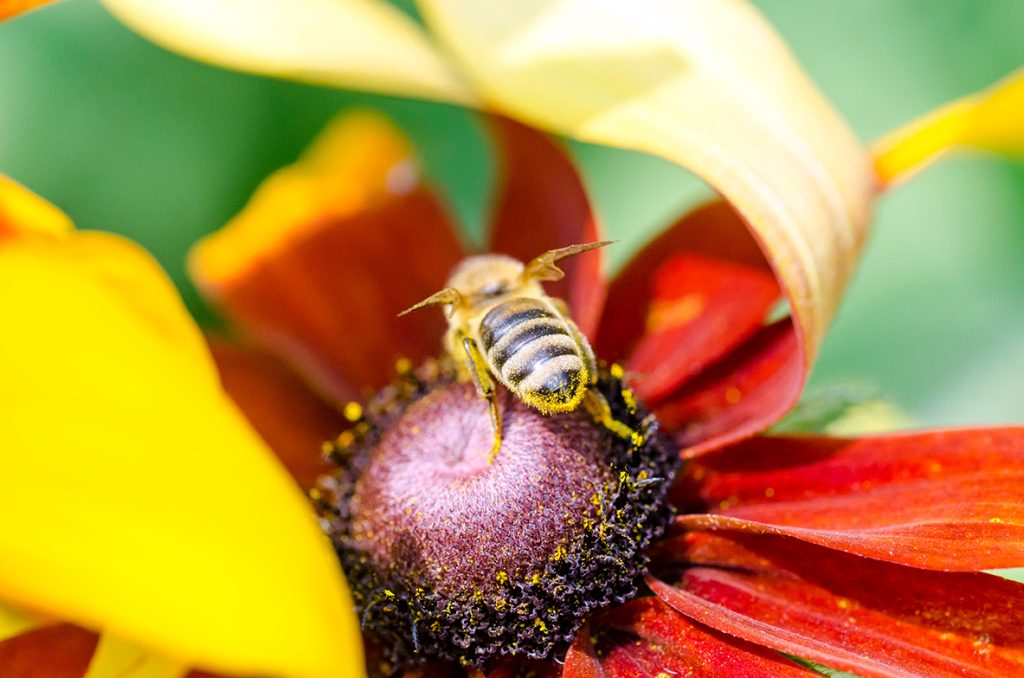
With the current global food crisis, boosting pollinator populations is imperative for stabilizing the future of our food supply. Because over 30% of all food crops rely on insects and other species for pollination, ensuring that these vital pollinators have adequate habitat and nutrition is essential. However, many important species like the honeybee have seen major declines over the last few decades.
Growing wildflowers on your land is a reliable, effective way to attract pollinators and increase pollination. Although urban development and land clearing have caused many wildflower populations to diminish, efforts like those of the Conservation Reserve Program (CRP) are attempting to reverse these losses. Here, we will examine how wildflowers increase pollination and how you can start growing wildflower species on your land.
Provides pollinator habitat and nutrition
The best way to attract local pollinators to your land is to plant a diverse mix of wildflowers. Species like wild bergamot or bee balm, coneflower, stiff goldenrod, and more entice pollinators like bees, butterflies, and birds with their bright, colorful flowers and sweet scents. Pollinators rely on wildflowers like these for habitat and nutrition. In turn, they enhance pollination by transporting pollen from flower to flower, which boosts fertilization and crop production.
Different types of wildflowers will attract different pollinator populations. For example, milkweed is known to attract monarch butterflies, as it provides the proper nutrition for their caterpillars to metamorphose. Alternatively, evening primrose attracts nocturnal pollinators like bats and moths, since it typically blooms at night. By attracting numerous types of pollinators, threatened populations will be able to thrive and continue their indispensable contributions to the global food supply.
Pollinator Habitat Planting: CP42
For landowners participating in CRP, enrolling in conservation practice CP42 is the perfect way to introduce pollinating wildflowers onto your land. This practice requires that participants grow a diverse mix of wildflowers, including species like black-eyed Susans and purple coneflowers. Legumes like crimson clover and shrubs can also be added to the mix.
The wildflower seed mix should contain at least 3 species for each bloom period: April-June 15, June 15-July, and August-October. Growing such a diverse mix of wildflowers will, in turn, attract a diverse group of pollinator species. This allows landowners to maximize the benefits of different pollinators on their land. Planting wildflowers also provides other benefits, like soil remediation, reduced erosion, improved water quality, and enhanced biodiversity for the entire ecosystem.
Choosing and growing the right wildflowers for your land
Whether you’re enrolled in CP42 or merely want to boost your land’s pollinators, choosing the right pollinator seed mix is key. For CP42 participants, there are specific rules and requirements, like those mentioned above, that your CRP seed mix will need to contain to qualify for the program. Additionally, growing the right native species adapted to your region is crucial to the success of your stand.
For landowners without much experience with pollinators, choosing the right wildflower seeds to plant for your project can be a challenge. At All Native Seed, our team has over 100 years of combined experience designing diverse CRP seed mixes that meet USDA standards for CRP. We use only the highest quality seeds processed for optimal germination at economical prices. Our experts can help you select the proper species for your mix that will work best for your project and your land.
In addition to providing the seed, we can assist with establishment through our sister company, FDCE. Using our proprietary BOOST treatment, wildflower seedling vigor and survival are increased by up to 400% over seeds that have not been treated. Ready to get your wildflower project started? Contact us at All Native Seed today!
